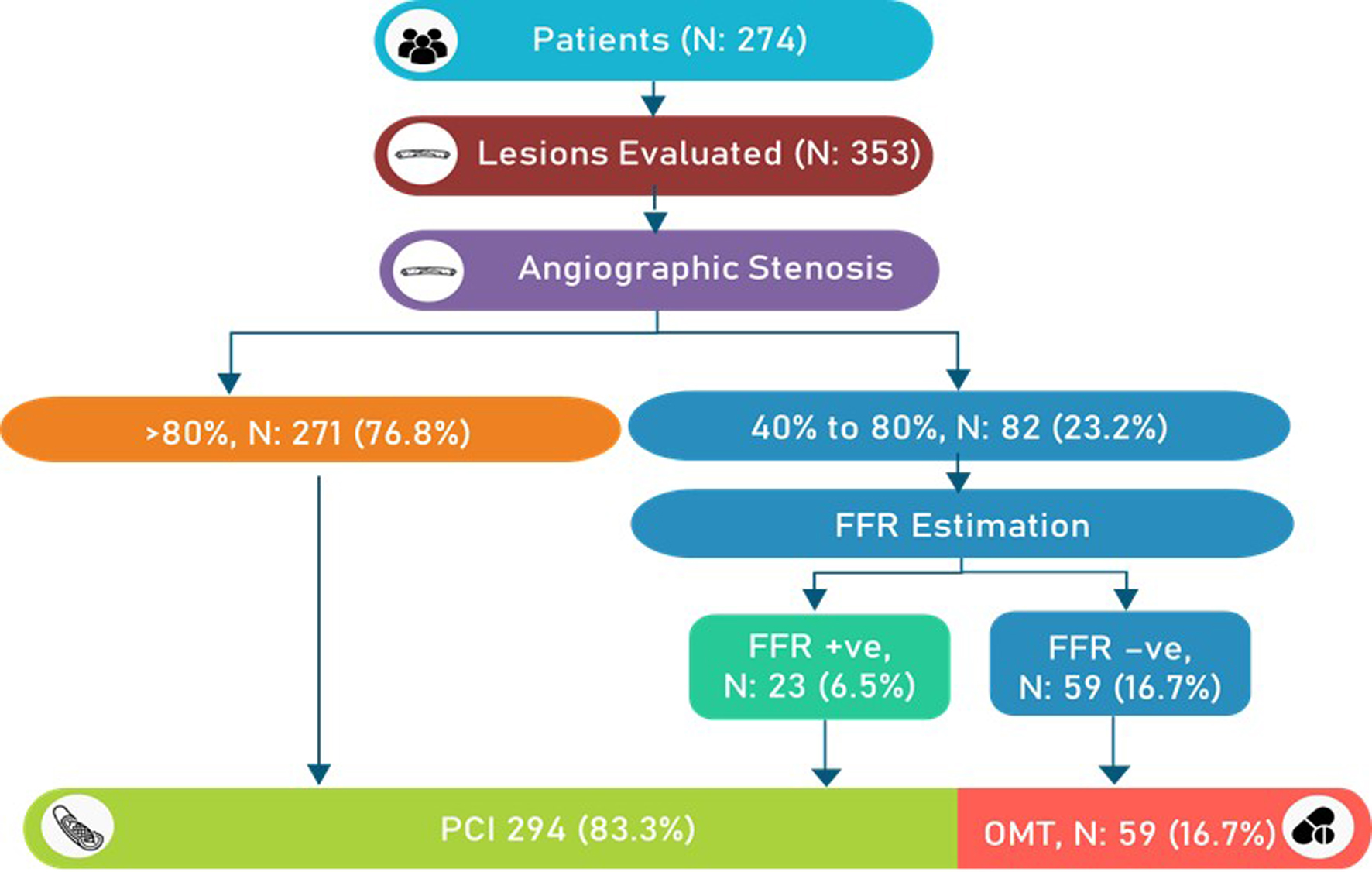Impact of Systematic Use of Fractional Flow Reserve and Optical Coherence Tomography on Percutaneous Coronary Intervention Outcomes in Patients With Diabetes
DOI:
https://doi.org/10.14740/cr2052Keywords:
Diabetes mellitus, Physiology, Optical coherence tomography, Fractional flow reserveAbstract
Background: Intracoronary imaging and physiology guidance of percutaneous coronary intervention (PCI) have shown significant improvements in clinical outcomes. However, comparable data on the use of these modalities in PCI of patients with diabetes are only sparsely available from South Asia. This study investigated the feasibility and clinical outcomes of systematic use of fractional flow reserve (FFR) and optical coherence tomography (OCT) during PCI in patients with diabetes.
Methods: The study enrolled 275 patients (≥ 18 years) from nine centers in India and one from Bangladesh between October 2021 and September 2022. Patients with stable ischemic heart disease, non-ST-elevation myocardial infarction (MI), and unstable angina were included in the study. Angiographically intermediate lesions (diameter stenosis of 40% to 80%) underwent FFR-guided PCI. Lesions with a diameter stenosis of > 80% underwent PCI without FFR evaluation. All PCI procedures were guided by OCT using the MLD-MAX algorithm.
Results: At 12 months, the target lesion failure (TLF) rate, a composite of cardiac death, nonfatal MI, and clinically driven target lesion revascularization, was 3.3%. Among the intermediate lesions, PCI was deferred by 70% after the FFR evaluation. Pre- and post-procedural OCT has led to a strategy change in 49.5% and 33.6%, respectively.
Conclusions: The study revealed a relatively lower rate of events with FFR and OCT guidance compared to historical data from angiography-guided PCI in patients with diabetes. The strategy of combined use of FFR and OCT in PCI may contribute to improved clinical outcomes in patients with diabetes.

Published
Issue
Section
License
Copyright (c) 2025 The authors

This work is licensed under a Creative Commons Attribution-NonCommercial 4.0 International License.









